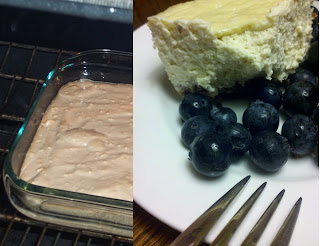 |
| Holiday Cookies - Before & After |
My friend was in a quandry. She started a low carb nutrition regimen right as the holidays began. A smart move, in my opinion, to avoid holiday waist inflation! ;-) But her usual holiday MO was to make copious quantities of baked goods to give away. And in the process, much cookie dough was also consumed. What to do? This one is for you, friend!
Ingredients for the cookie base (vanilla shortbread)
- 2 cups almond flour
- 1/2 cup Splenda
- 7 packets stevia powder
- 1 stick (1/2 cup) room temperature salted butter
- 2 teaspoons vanilla extract
For almond cookies: add 2 teaspoons almond extract
For pecan sandies: add 3/4 cup chopped pecans & roll dough balls in powdered xylitol (Ideal Confectionary Sweetener) before baking & do not press cookies
For chocolate cookies: add 1/3 cup unsweetened cocoa powder
For snickerdoodles: add 1 teaspoon almond extract + 1 1/2 teaspoons ground cinnamon
For chocolate chip cookies: add 3/4 cup sugar-free chocolate chips or 3/4 cup raw cocao nibs
Preheat oven to 350°F. Line a muffin tin with paper liners (makes ~20 cookies). Combine all ingredients using a fork. Form dough into balls using two teaspoons (form 'quenelles' for you chef wannabes). Bake for 7 minutes. Press the dough balls down lightly with the back of a spoon to fill the bottom of the muffin cup (makes a nice round cookie). Continue baking for another 17 minutes or until just browned on the edges.
Inspiration recipe: http://www.lowcarbluxury.com/recipes/recipe-cookie02.html








